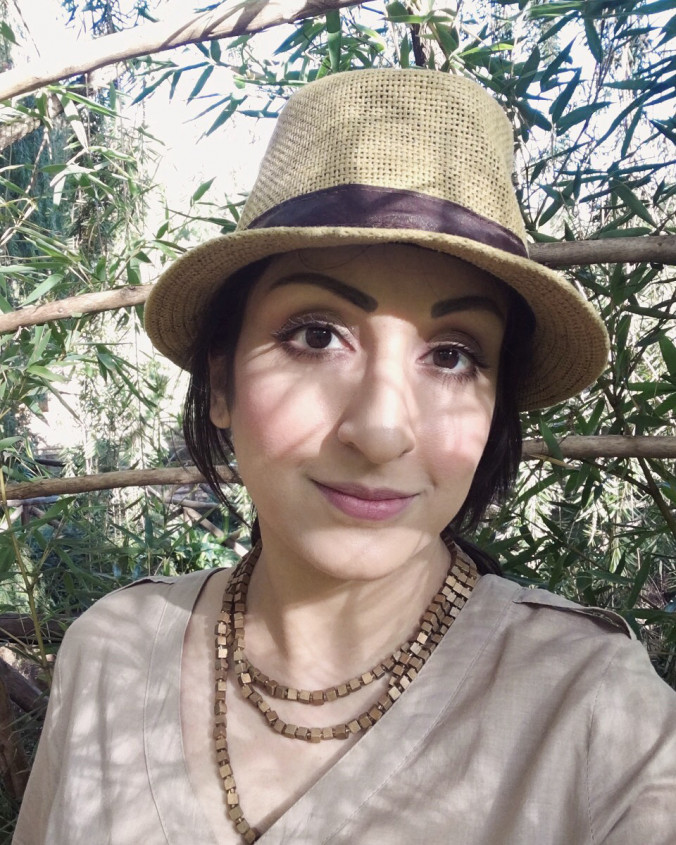Sheniz Janmohamed was a fourth-year English student at St. Michael’s College when the prestigious Hart House Review published her poetry. It was a moment of excitement and pride – the same emotions she felt 15 years later on hearing about her appointment as U of T Scarborough’s 2022 writer-in-residence.
Janmohamed (BA 2006 St. Michael’s) was prolific during her undergraduate years, publishing magazine features and book reviews in addition to poetry and testing out her new poems at local open mic nights. “Somebody gave me the wise advice to use my time as a student to get my work out there as much as possible, and I definitely did,” she says.
Since then, the poet, spoken word artist and educator has performed nationally and internationally and published in journals including Arc Poetry Magazine, Descant and Quill & Quire.

Janmohamed has been writing for as long as she can remember. Her parents still tease her about not being able to pronounce “poem” as a young child. “I called them ‘polems,’ and I recently found a box full of them, going right up into high school,” she says. “It was interesting to see that I’m still exploring some of the themes I was writing about back then in a much less sophisticated way, like what it means to belong and the search for our common humanity.”
In her just-released third poetry collection, Reminders on the Path, Janmohamed takes readers on a journey that moves between the past and the present. “I look at the gifts – but also the challenges – we inherit from our ancestors, and how we decide what to keep and let go of as we chart our own path,” she says. Several reviewers have said the collection reflects the diasporic experience and Janmohamed’s own South Asian background. She says this wasn’t at the forefront of her mind when she was writing the collection, but now recognizes the parallels.
The book’s cover features one of her own visual art pieces, an arrangement of leaves and moss overlaid with a path of gold-painted walnuts and dried flowers. “Going for walks in nature has always helped me when I’m feeling stuck,” she says. “I started creating nature art as a companion to my writing practice, where I’d mind-map ideas I couldn’t yet put into words. Then it developed into a separate artistic discipline for me.”
Downtime during the pandemic, when most of her readings and performances were cancelled, accelerated Janmohamed’s artistic production. She made one mandala – a circular artwork with geometrical patterns – with natural materials every day in 2020 and posted it on Instagram, for example. “It was a way of staying creative and connected,” she says. Her practice has since expanded to include sand art creations.
Teaching visual art and creative writing workshops to participants of all ages is a central part of Janmohamed’s career. She says one of the most meaningful things she does as an artist is collaborate with people to find their creativity, while examining questions of social justice, ancestry and our connection with nature. “As an art educator and mentor I try to provide spaces where we’re creating together as a community, which tends to give everyone courage and inspiration.”
At the end of her workshops, Janmohamed often feels there’s work left undone. That’s partly why she’s so looking forward to her appointment at UTSC. “I’ll have time to engage with people long enough to support them effectively,” she says.
Launched in 2013, the Writer-in-Residence program creates opportunities for students to interact with accomplished writers through in-class workshops, creative writing groups and regular office hours.
“I hope to collaborate with faculty members, galleries, libraries, student organizations and more,” says Janmohamed. “I also want to share my experience in navigating the writing industry, not just honing the craft. Overall, my approach will be to listen and understand what people need, offer them whatever resources, time, attention and connections I can, then get "me" out of the way. And I plan to facilitate poetry walks outside on the campus’s beautiful trails as much as possible.”
To learn more about the Writer in Residence program, or to discuss how Janmohamed might contribute to your class or event next term, contact Andrew Westoll: andrew.westoll@utoronto.ca
